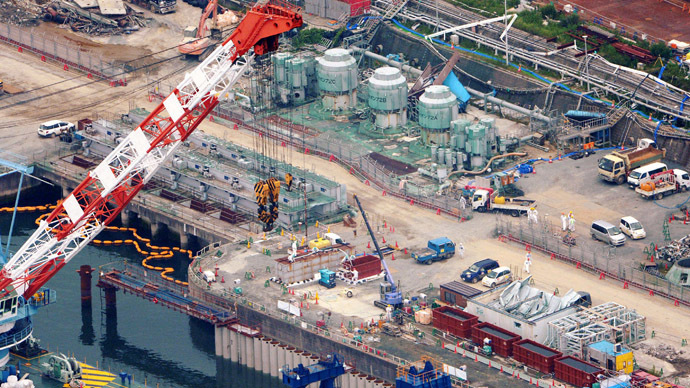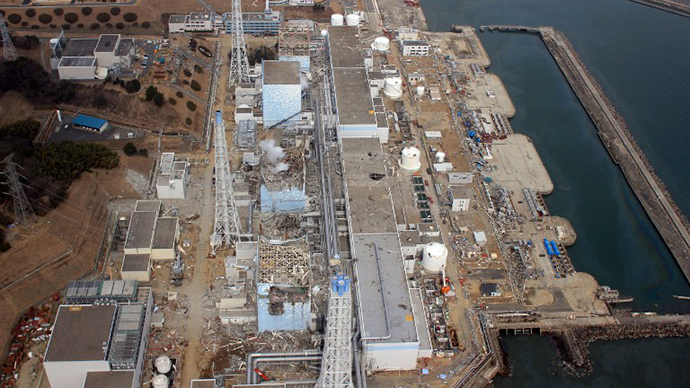Contaminated groundwater accumulating under the crippled Fukushima nuclear power plant has risen 60cm above the protective barrier, and is now freely leaking into the Pacific Ocean, the plant’s operator TEPCO has admitted.
Follow RT’s LIVE UPDATES on Fukushima leak
emergency
The Tokyo Electric Power Company (TEPCO), which is responsible
for decommissioning the damaged Fukushima Daiichi nuclear plant,
on Saturday said the protective barriers that were installed to
prevent the flow of toxic water into the ocean are no longer
coping with the groundwater levels, Itar-Tass reports.
The contaminated groundwater, which mixes with radioactive leaks
seeping out of the plant, has already risen to 60cm above the
barriers – the fact which TEPCO calls a major cause of the
massive daily leak of toxic substances.
Earlier on Friday, the company announced it started pumping out contaminated groundwater from under Fukushima, and managed to pump out 13 tons of water in six hours on Friday. TEPCO also said it plans to boost the pumped-out amount to some 100 tons a day with the help of a special system, which will be completed by mid-August. This will be enough to seal off most of the ongoing ocean contamination, according to TEPCO’s estimates.
However, Japan’s Ministry of Industry has recently estimated that some 300 tons of contaminated groundwater have been flowing into the ocean daily ever since the March 2011 earthquake and tsunami that triggered the disaster.
TEPCO also promised it will urgently reinforce the protective shields to keep radioactive leaks at bay. The company has repeatedly complained it is running out of space and has had to resort to pumping water into hastily-built tanks of questionable reliability, as more than 20,000 tons of water with high levels of radioactive substances has accumulated in the plant’s drainage system.
Water samples recently taken at an underground passage below the
Fukushima nuclear plant showed extreme levels of radiation comparable
to those taken immediately after the March 2011 catastrophe. The
tested water, which had been mixing with ground water and flowing
into the ocean, contained 2.35 billion Becquerels of cesium per
liter – some 16 million times above the limit.


